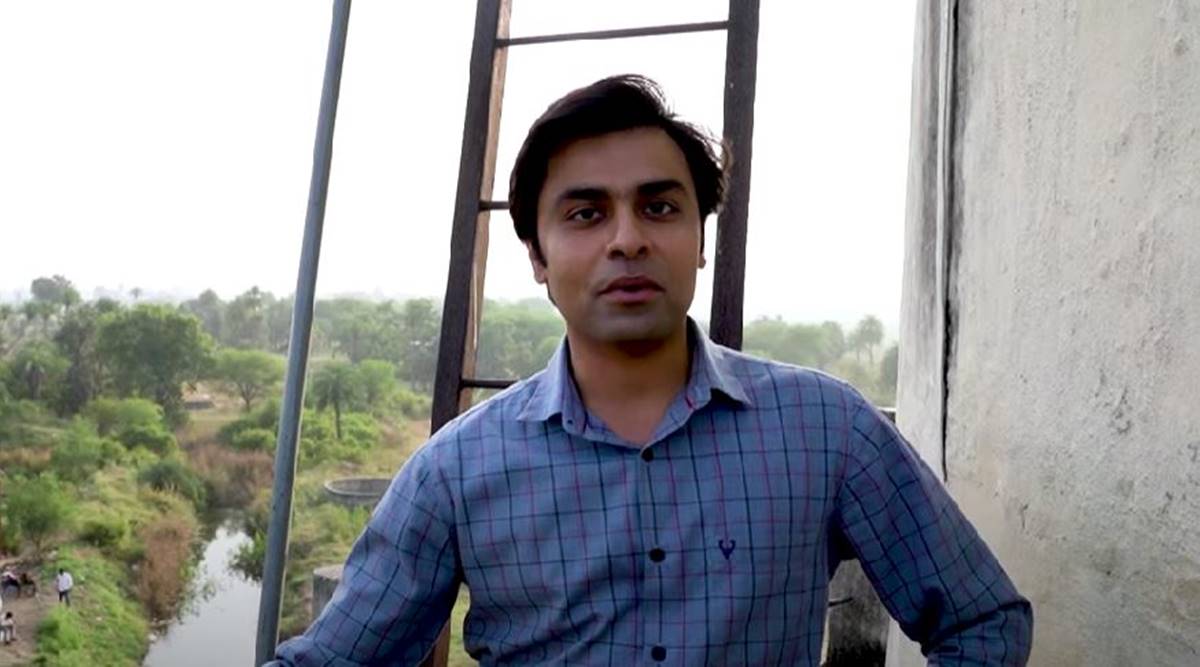 But even as Panchayat breaks many myths about Indian villages, it creates myths of its own, the biggest being the absence of jaat-paat. (Photo:Amazon Prime)
But even as Panchayat breaks many myths about Indian villages, it creates myths of its own, the biggest being the absence of jaat-paat. (Photo:Amazon Prime)I woke up to the web series Panchayat quite late, watching it only last week when the second season of the show began streaming. I wrapped up both seasons in two days and two nights, charmed by the story of a young Abhishek Tripathi, played by Jeetendra Kumar, trying to accept his new rural life after being suddenly plucked from Delhi and planted in Phulera, a village in the Hindi heartland.
From the very first drone shot of Phulera in the opening credits, one is assured that one is watching a story from the hinterlands of the real India of the 2020s: Lush, green fields that are not photoshopped, a girl in jeans drawing water from an almost dried-up well, goats being herded into worn-out gravel roads, a mix of pucca and kutcha house with cemented by-lanes and open drains, the sound of a sewing machine, the government’s social campaign messages painted in yellow and black on house walls, a towering water tank. Thanks to the adept screenplay, direction, and acting, the people in the village seem real too – their mannerisms, accent, how they walk, talk and react to situations.
But even as Panchayat breaks many myths about Indian villages, it creates myths of its own, the biggest being the absence of jaat-paat. In 16 episodes over two seasons, there is little confrontation with the most uncomfortable reality of rural India – the caste or varna system. There are only two instances where the show brings up the issue but in the most inane way.
In the first episode of season one, pradhan-pati Dubey coaxes his wife to allow gram sachiv Tripathi to stay at their house for a few days. He says: “Sabse badi baat, apne hi caste ke hain (The most important thing, he belongs to our caste)”. Both Dubey and Tripathi are Brahmin.
Best of Express Premium
The second reference to caste comes 13 episodes later, near the end of season two when Tripathi’s US-returned friend visits the village. When Dubey asks his name, he replies “Siddharth”. Dubey asks: “Pura naam bataiye (tell us your full name)”. Siddharth replies: “Certificate mein bhi kewal Siddharth hi hai (It’s Siddharth in my certificate too). Dubey prods: “Accha pitaji ka naam bataiye (Ok, tell your father’s name)”. Siddharth replies: “Manoranjan”. Tripathi, who by now has understood village life quickly adds: “Manoranjan Gupta”. Dubey, then says: “Toh Guptaji hai aap (So you are Guptaji)”. Such experiences are very common in the Hindi heartland, and the show gets it absolutely right.
But Panchayat has also completely obliterated caste from its narrative. Many characters are identified by their first names. While we know that pradhan-pati Brij Bhushan is Dubey, up-pradhan Prahlad is Pandey and sachiv Abhishek is Tripathi – all Brahmins – we don’t know the caste of Vikas, who runs errands for Dubey and Tripathi. Dubey’s rival is identified as Bhushan, but we are not told his surname. In a blink-and-miss shot in the ‘Jaise ko taisa’ episode, one learns that he is ‘Bhushan Sharma’, thanks to two words scribbled on the front gate of his house.
When villages in north India are divided into caste-based tolas (hamlets), Phulera seems unrealistically caste-less. There are no Dalits, no Sonkars, no Paswans, no Rajbhars and not many OBCs. We don’t hear about “choti jaat” as we see characters without surnames and characters with surnames quite often talking, walking, and sometimes even eating together comfortably.
If the newly appointed panchayat sachiv was an OBC or Dalit; if, instead of Abhishek Tripathi, if he was Abhishek Paswan, would pradhan-pati Dubey and his wife Manju be as welcoming? Would Vikas, whose caste we don’t know, treat him in the same way? Would Abhishek Paswan and Rinki Dubey still eat samosas together at a sweet shop? One can only wonder.
One also wonders why the makers of the show – The Viral Fever (TVF), series director Deepak Kumar Mishra and writer Chandan Kumar – identified the castes of some characters and dropped the surnames of others in this village, which we are told exists somewhere near Ballia. Was this deliberate, or just a simple lapse? Whatever the reason, it amounts to “caste-washing”.
Despite the authenticity of its screenplay and acting, the glaring absence of underprivileged castes from the narrative makes Panchayat far from real. It displays a monochromatic alternate society, too utopian, too sanitised, too simple, and too naïve. After watching the series, if someone starts believing that he or she knows about India’s villages, they are in for a rude shock. Just like the character of Ayan Ranjan, played by Ayushmann Khurrana, in Anubhav Sinha’s Article 15 when the Brahmin IPS officer is jolted by the harsh and crude reality of caste oppression in the rural Hindi heartland.
sudhakar.jagdish@expressindia.com
- The Indian Express website has been rated GREEN for its credibility and trustworthiness by Newsguard, a global service that rates news sources for their journalistic standards.

